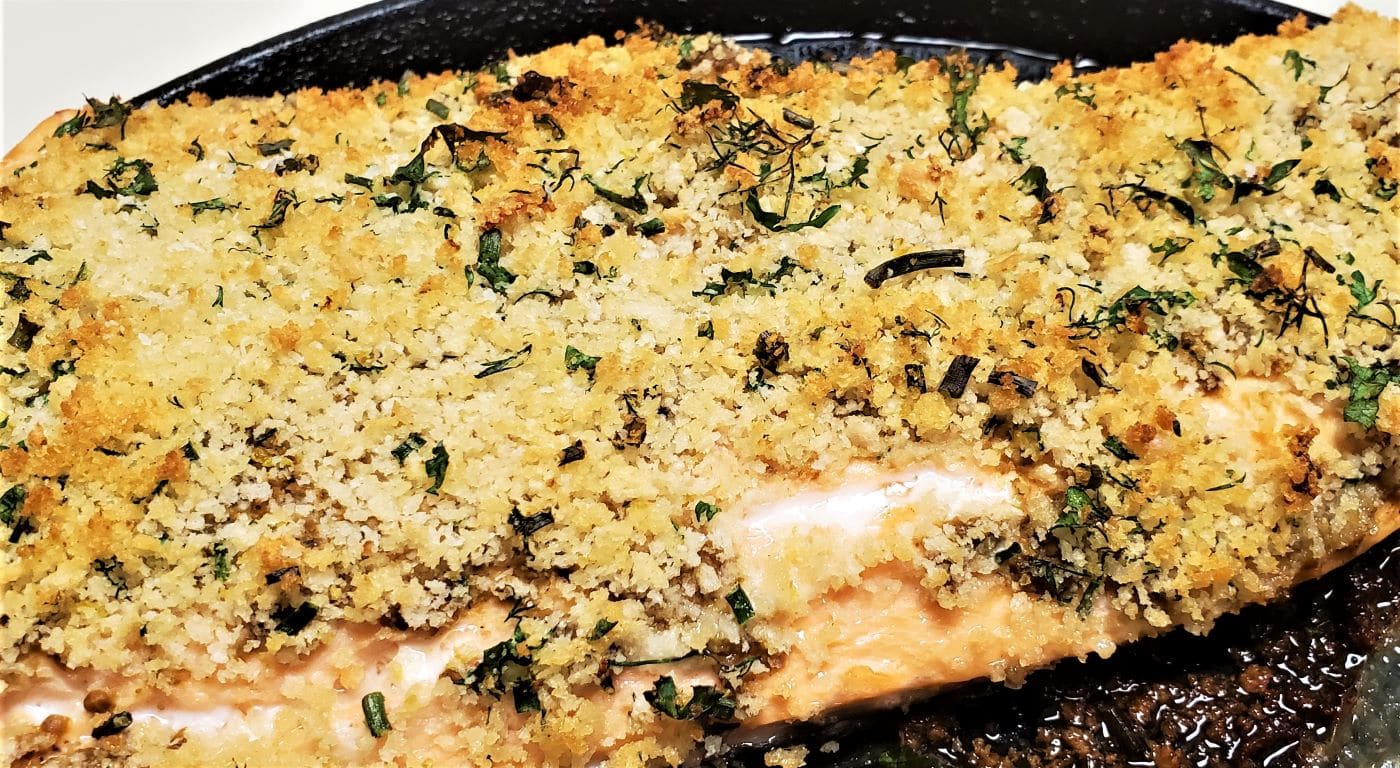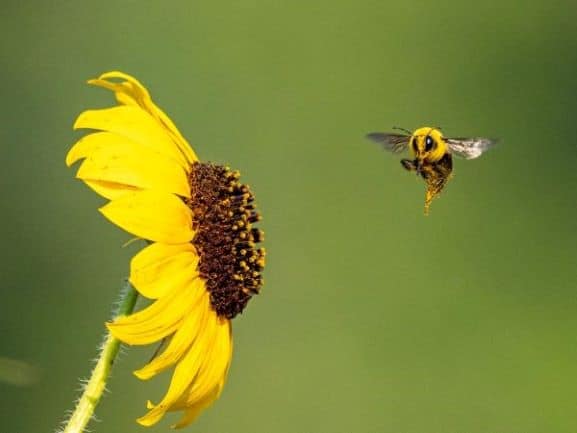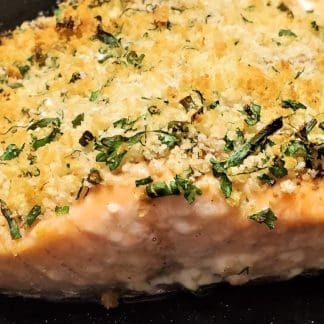Baked Salmon Fillet
How to Make a Sumptuous Salmon Fillet (in minutes)
Nebraska, known as the Beef State, hosts Buzz Savories’ corporate office, 6.64 million cattle, and only 1.8 million Nebraskans. Cattle outnumber Nebraskans nearly 4 to 1.
Generally, Nebraskans prefer Beef for Dinner. We buy aged and prime quality beef products, and we grill it, roast it, fry it and make it into meatloaf.
Then we want salmon. A friend who owns a prominent meat market in Nebraska requested a sure-to-satisfy recipe for salmon. He says, “A time comes in mid-week when I want SALMON for dinner. I want an easy recipe that tastes great every time.”
His request became my quest, and I researched and tested and bought more salmon steaks and tested again and again until I finally arrived at Ina Garten’s rendition of a baked salmon fillet. I tweaked it a bit to arrive at the Sumptuous Salmon Fillet, and I dedicate the recipe that follows to Matt at Fritz’s Meat Market.
Buzz Savories Honey Mustard or Spicy Beer Mustard are must-haves in this recipe. Buzz Savories mustards are blended of seven natural ingredients – yellow mustard seeds, brown mustards seeds, mustard powder, Olde Creamery Stout, cider vinegar, turmeric, allspice, salt, and honey. These ingredients, when blended, packed and heated to 180 degrees F., taste slightly sweet (Honey Mustard twice as sweet as Spicy Beer Mustard), 100% savory and rich with layers of flavor.
The Buzz
Mid June, and we set supers on the hives that are bursting with bees, upwards of 60,000 bees/colony. These colonies are needing more space to make and store nectar so we add a box of wood frames, called a honey super. Each super holds 10 frames made of a plastic imprinted with hexagons.
The young bees build the beeswax honey containers (the cells) atop the imprints.
Only young bees make the discs of beeswax that build the honey comb. Soon after a new worker bee emerges, it begins producing wax. The young honey bee workers have four pairs of special wax-secreting glands on the undersides of their abdomens. From these glands, they secrete liquified wax, which hardens into thin scales when exposed to the air.
We usually place 2 supers per hive when the bee population covers and extends beyond every frame in the two brood boxes. A queen excluder separates the honey supers from the laying queen keeping eggs and larvae separate from honey storage frames.
-
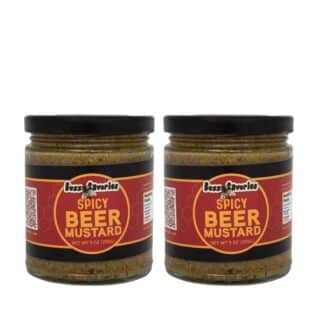
Spicy Beer Mustard
Rated 5.00 out of 5$25.00 Add to cart -
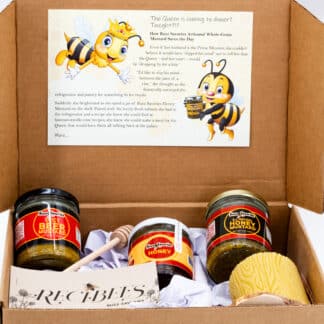
Spicy and Sweet Gift Set
$55.00 Add to cart -
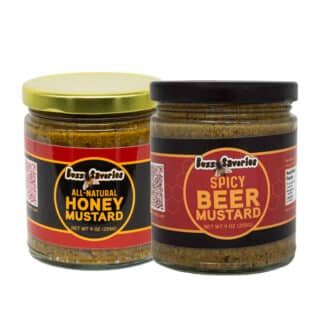
Mix & Match Sets
$25.00 Select options This product has multiple variants. The options may be chosen on the product page
Baked Salmon Fillet
What You'll Need:
- 4 6-8 oz salmon fillets or a 1.5 lb. slab of salmon Buy skin on fillets
- ⅔ cup Panko crumbs
- 2 Tb. fresh parsley, chopped fine or combine chives, fresh dill, parsley
- 1 tsp. grated lemon peel
- 2 Tb olive oil
- 2 Tb. Buzz Savories Spicy Beer Mustard
- ½ tsp salt and pepper to taste
Lemon and Yogurt Sauce for the Salmon
- 6 Tb. fresh squeezed lemon juice
- 1 garlic clove grated
- 1 tsp. salt
- 1 tsp. freshly ground pepper
- 2 cups yogurt
How To Prepare:
Salmon Fillet
- Preheat oven to 425.
- In a small bowl mix together the Panko crumbs, parsley, lemon zest, half the salt and half the pepper.
- Place salmon fillets, skin side down on a board. Brush the tops of the fillets with Spicy Beer Mustard. Brush lightly. No need to pack on the mustard. Spicy Beer Mustard adds flavor and retains moisture as the salmon bakes.
- Sprinkle generously with salt and pepper and press Panko thickly on top of the mustard on each fillet. The mustard will help Panko adhere and add flavor to the salmon.
- Heat vegetable oil over medium high heat in a 12" heavy skillet or griddle suitable for baking in a hot oven. When oil is very hot, add salmon fillets, skin side down. Sear 3-4 minutes without turning.
- Transfer to a hot oven for 5-7 minutes or less until salmon is almost cooked through and Panko browns. Remove from oven and tent with aluminum foil and allow to rest for 5-10 minutes.
- Check for doneness (salmon flakes when done) I like the thickest part of the salmon fillet underdone because it cooks more under the aluminum foil tent.
- Serve warm or hot with lemon slices and Lemon and Yogurt Sauce.
Lemon Yogurt Sauce for Salmon
- Mix and blend lemon juice, grated garlic, salt, pepper and yogurt.
- Serve with the roasted salmon and garnish with lemon slices and a fresh herb bouquet.

